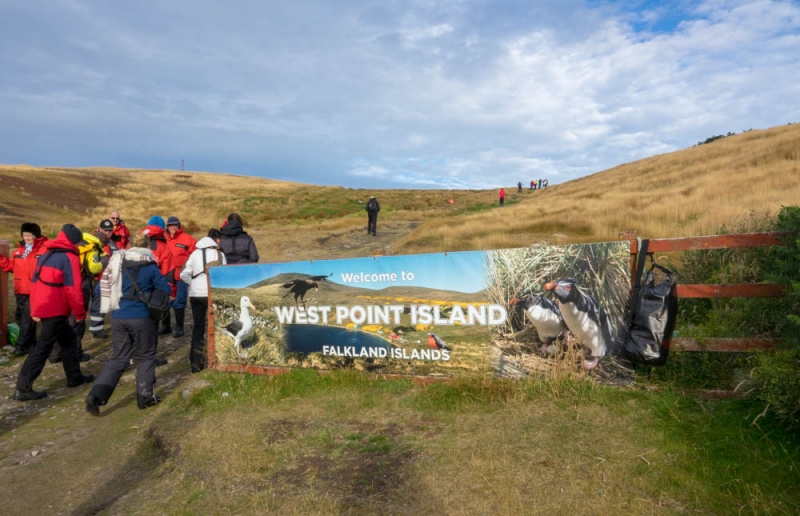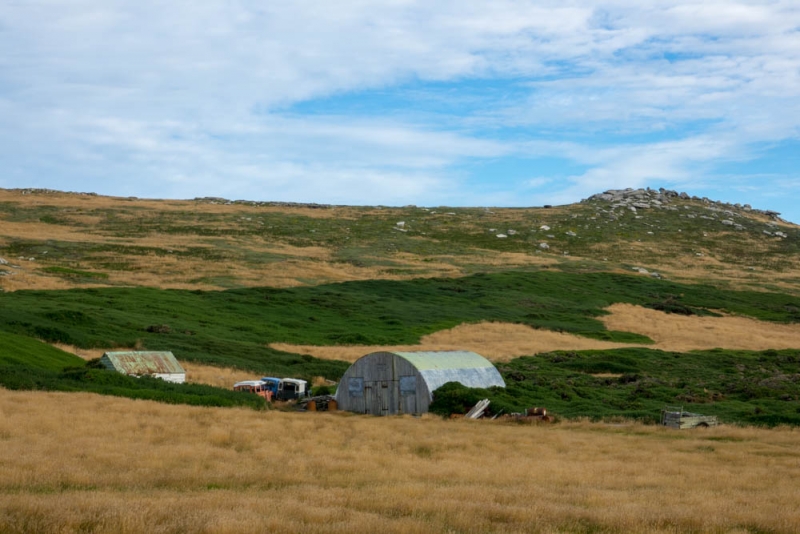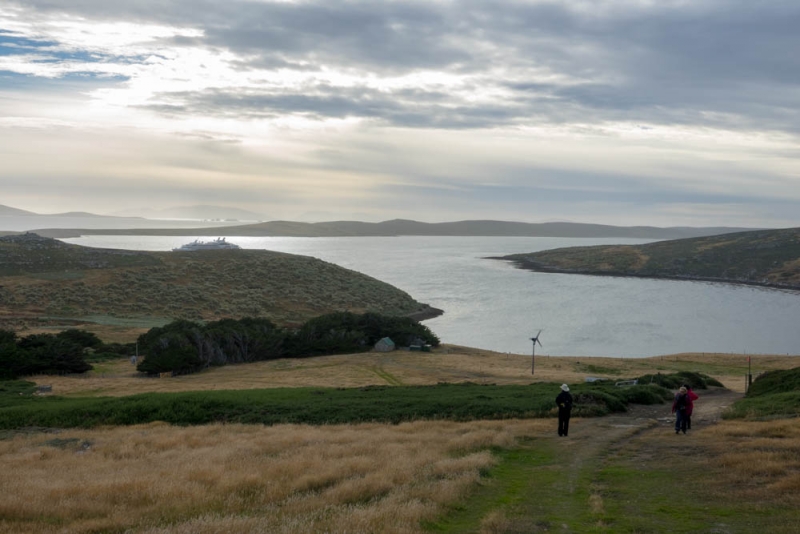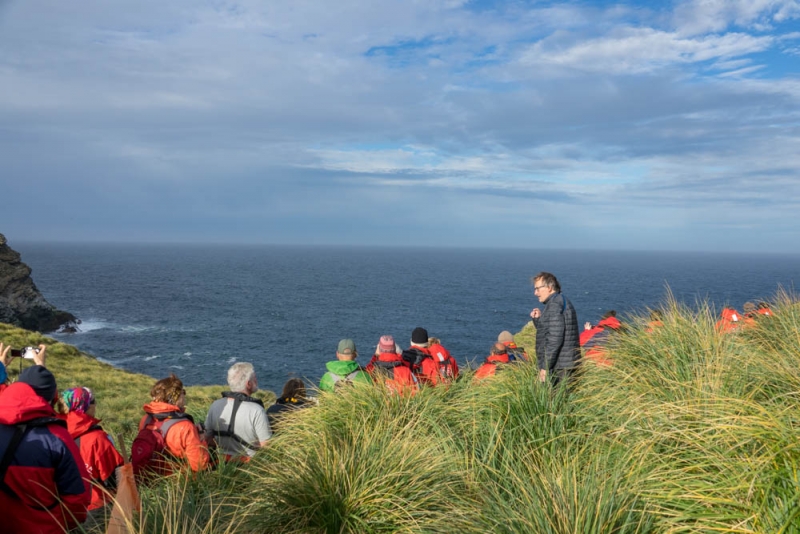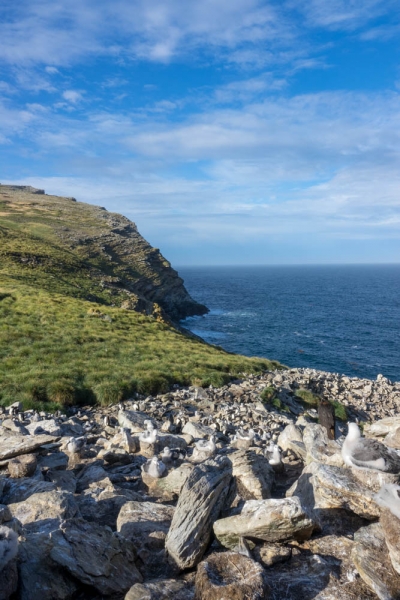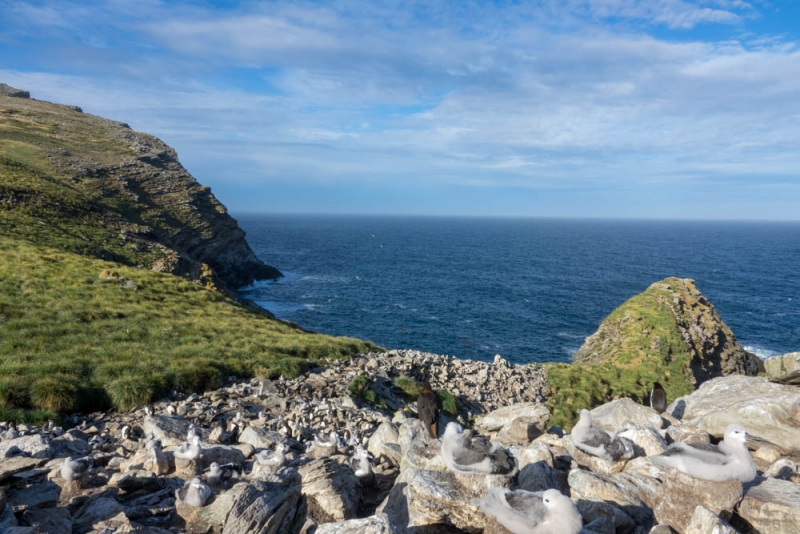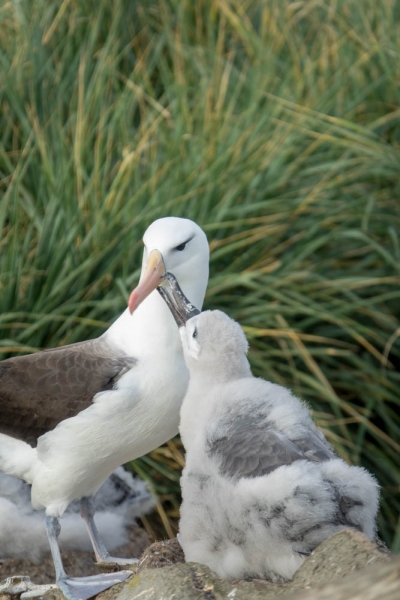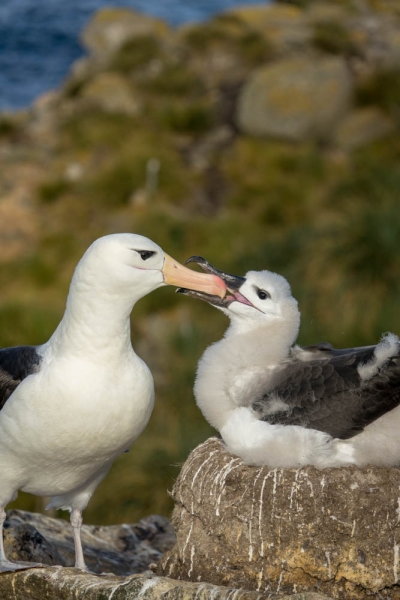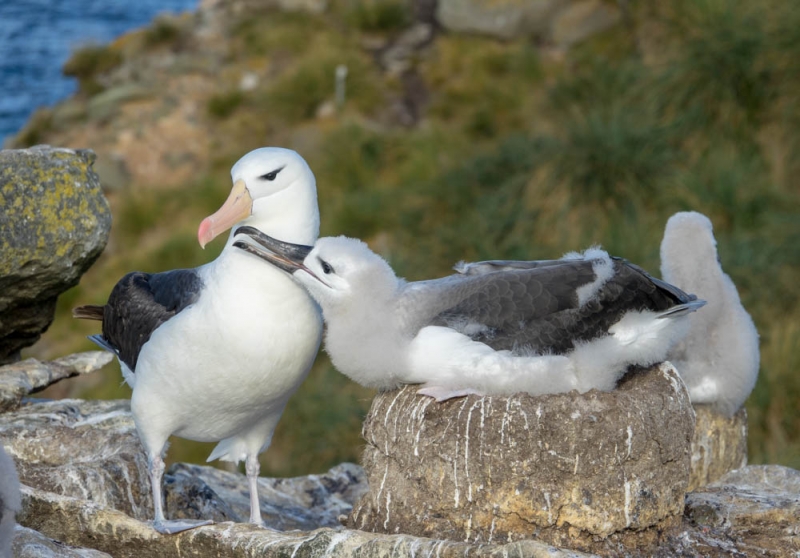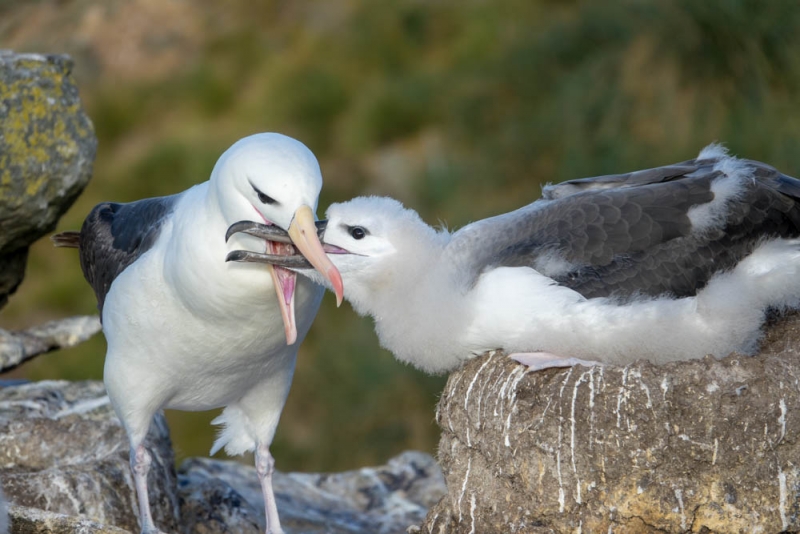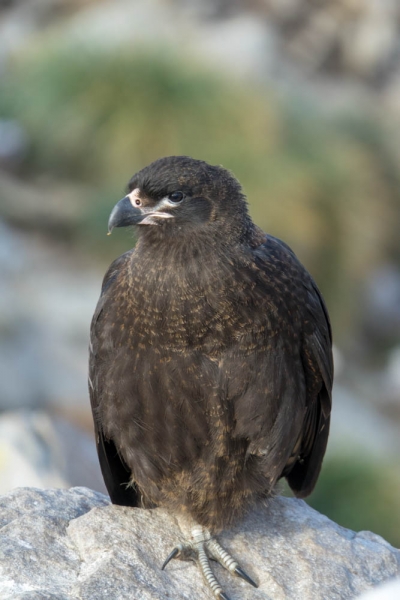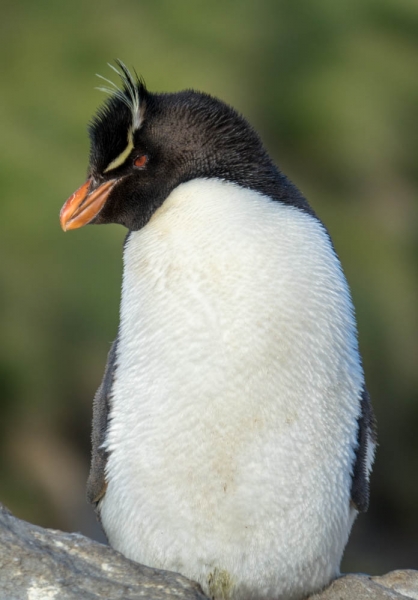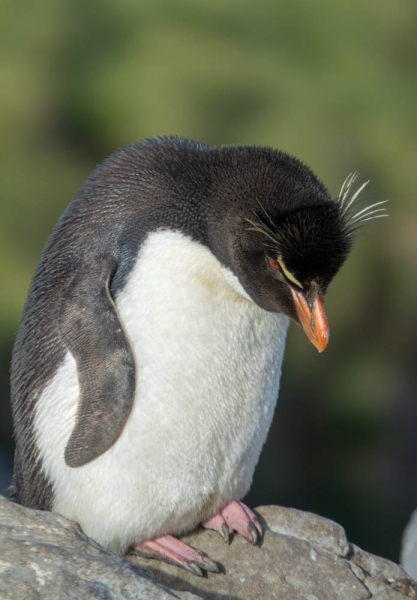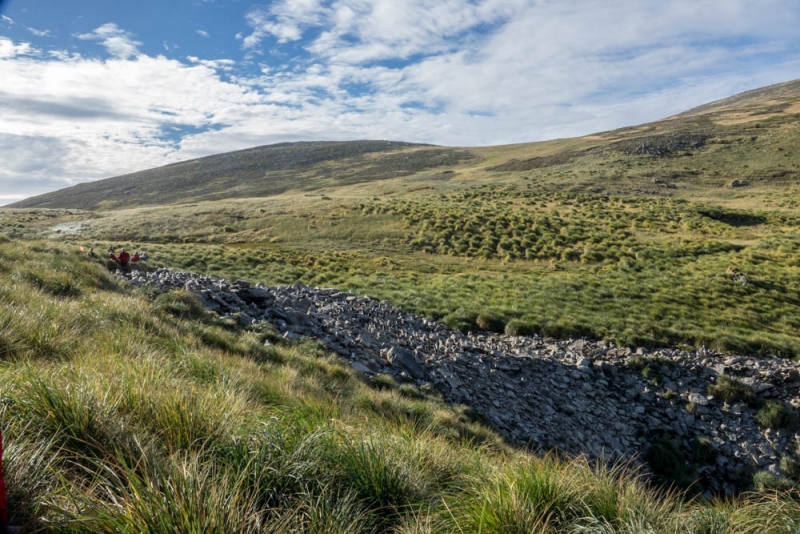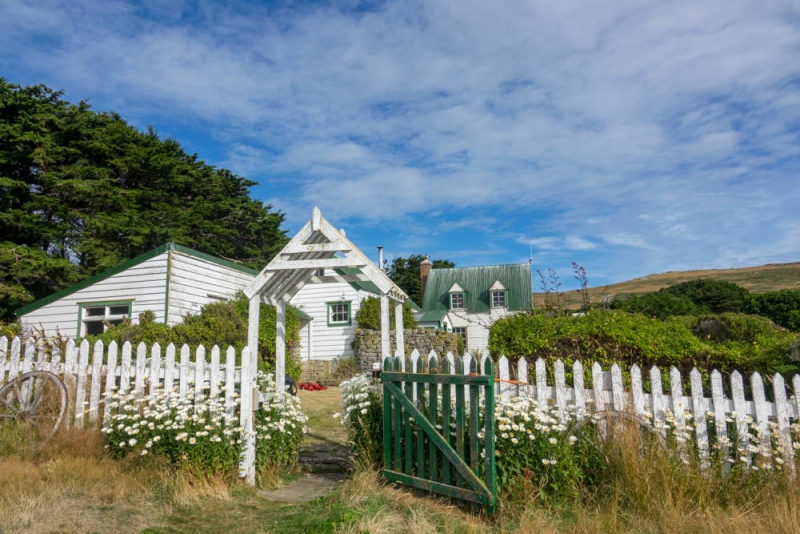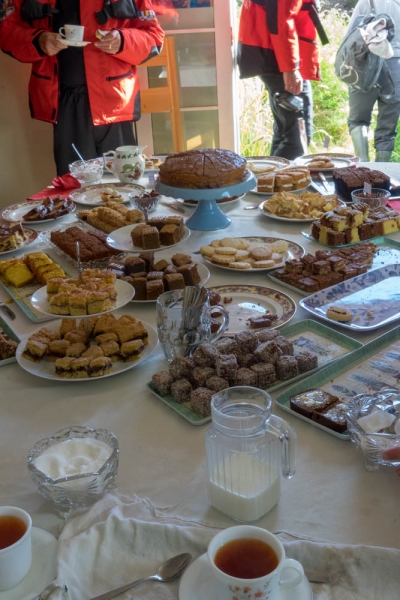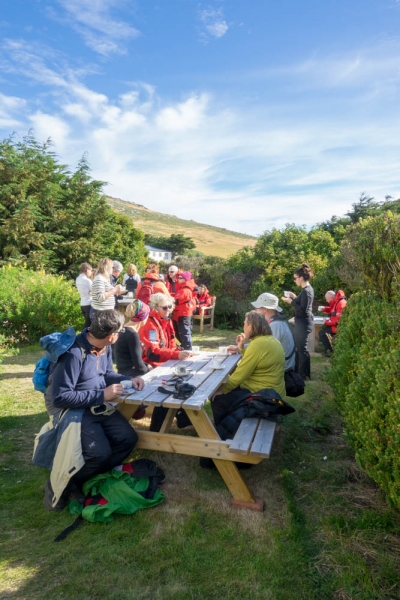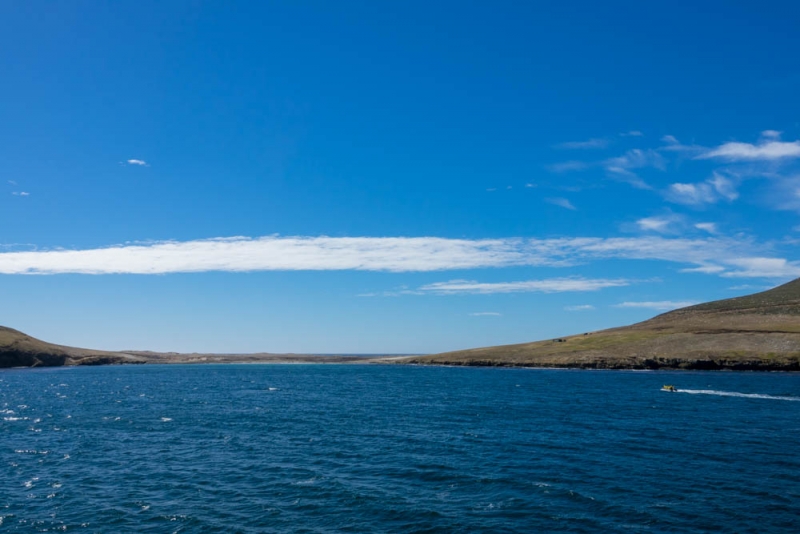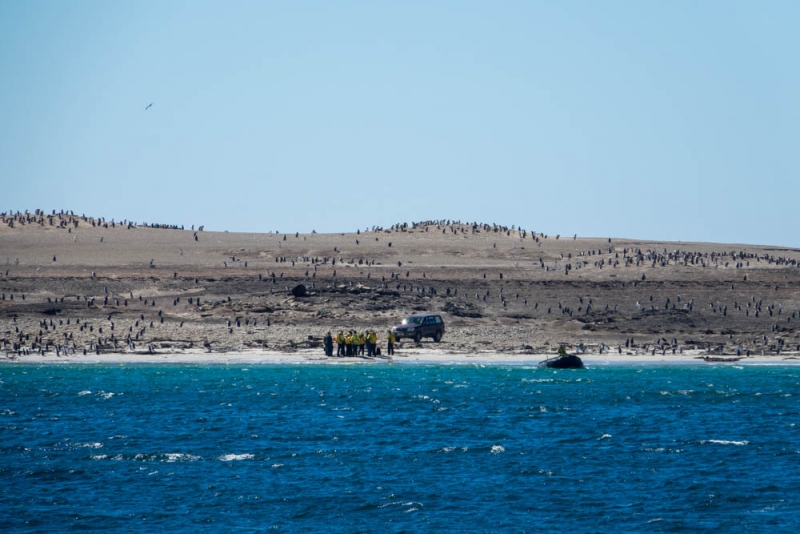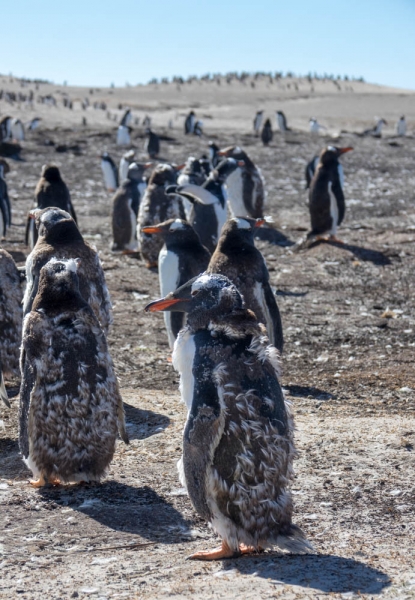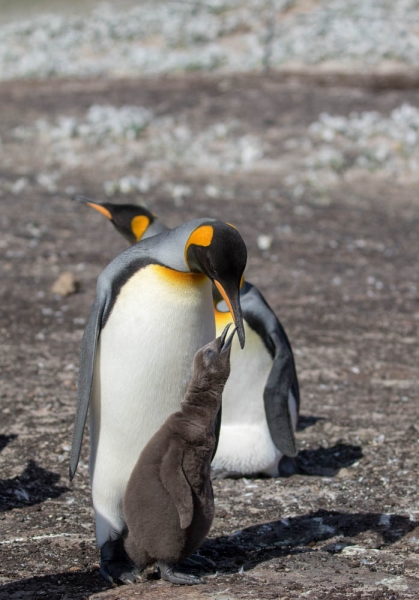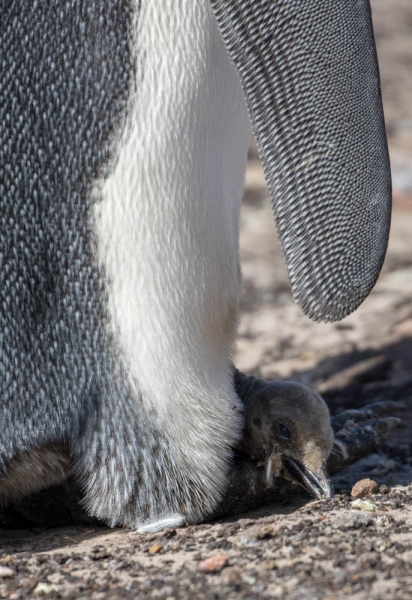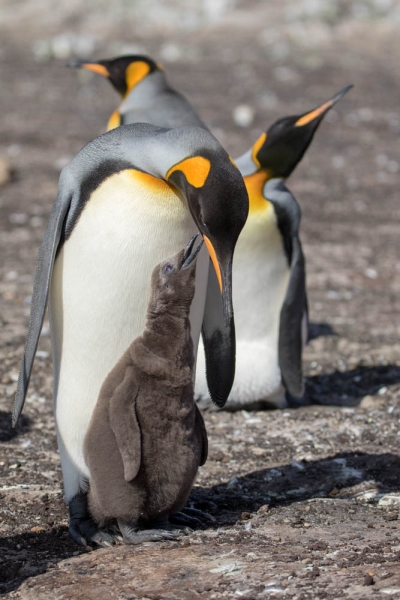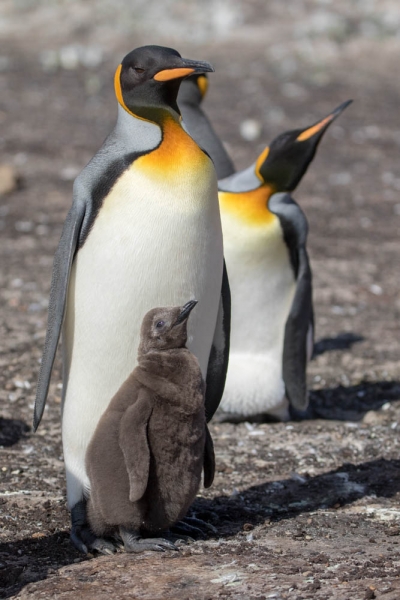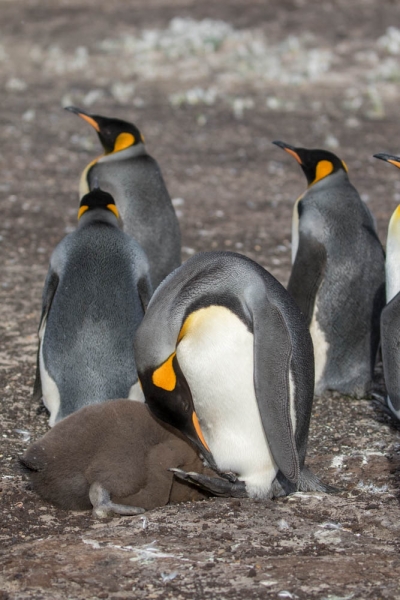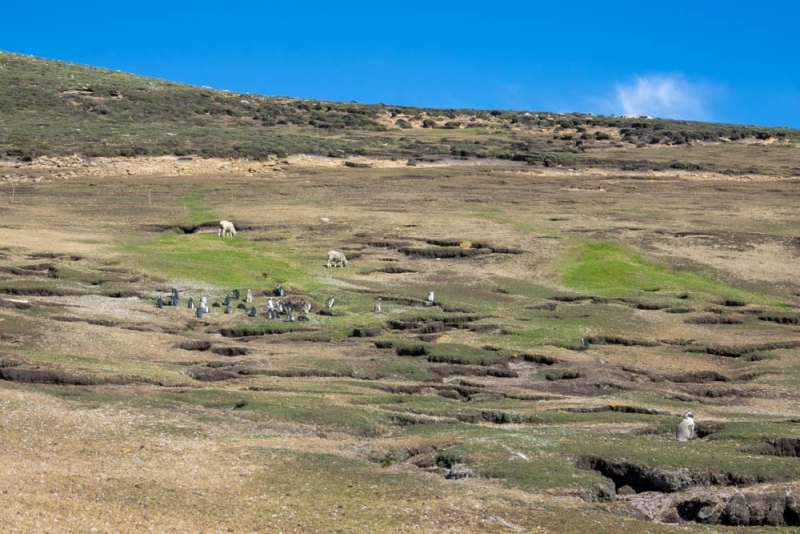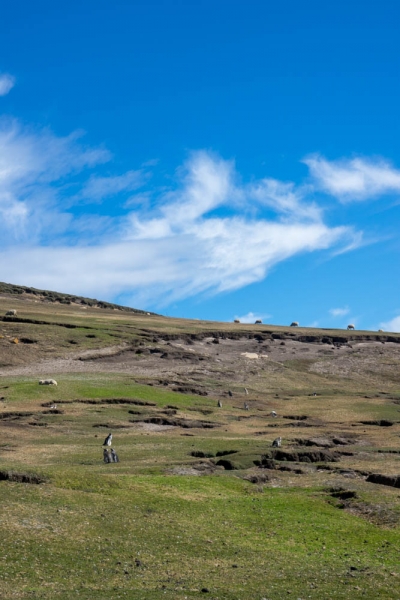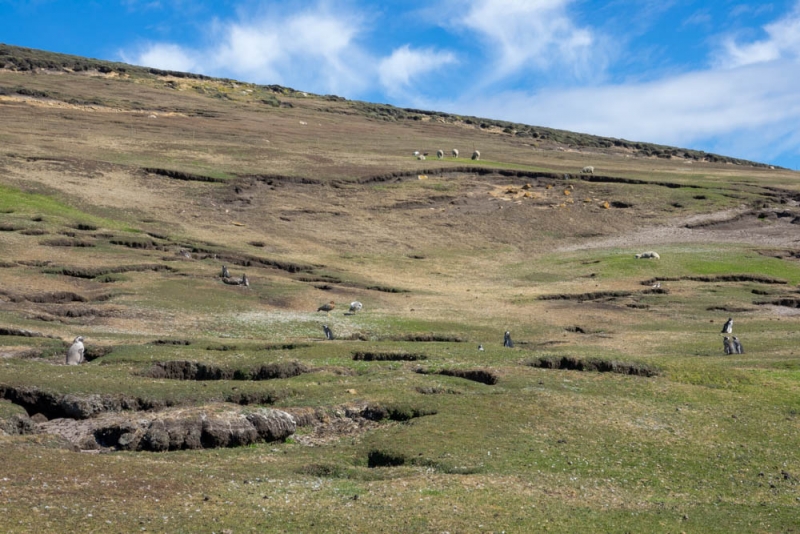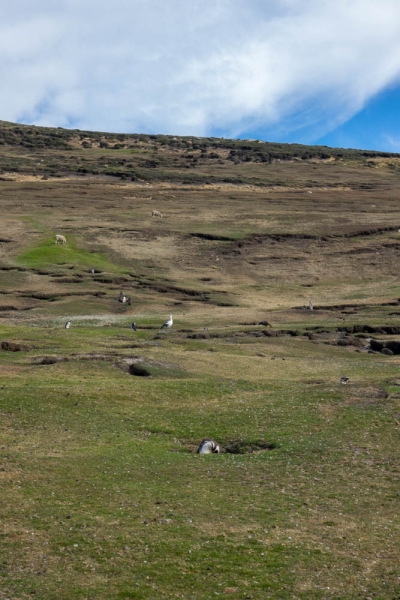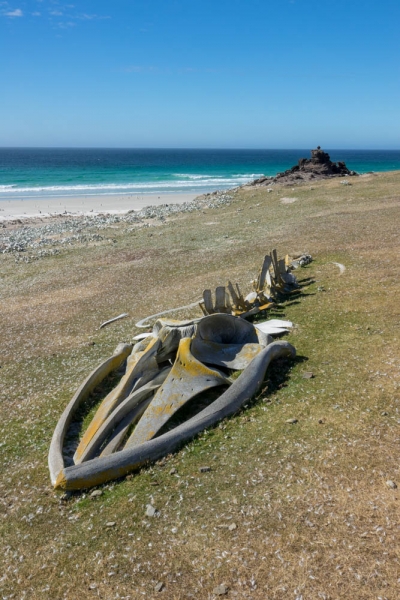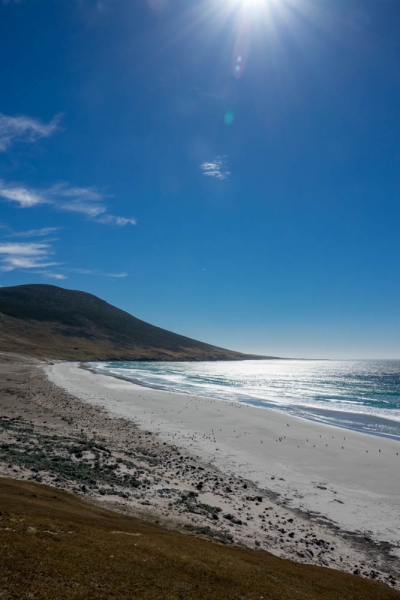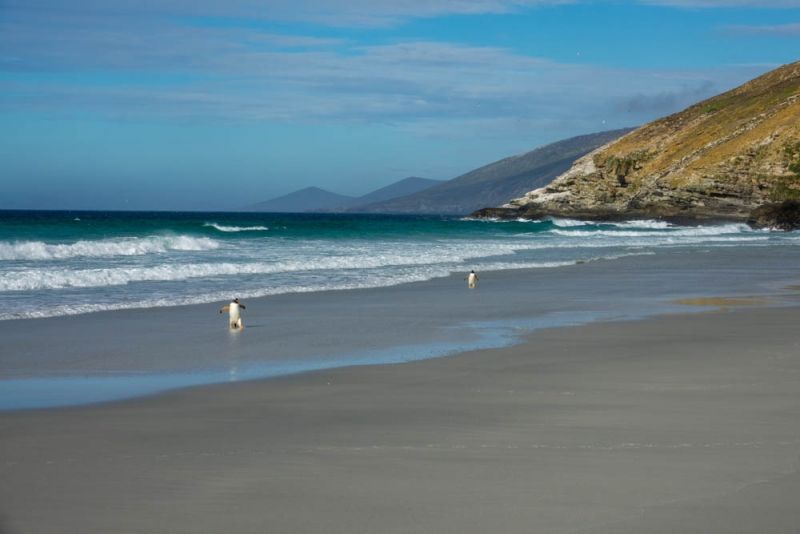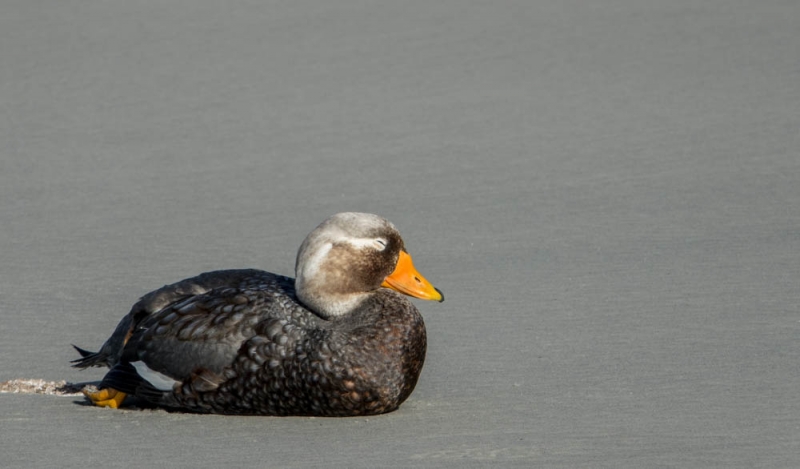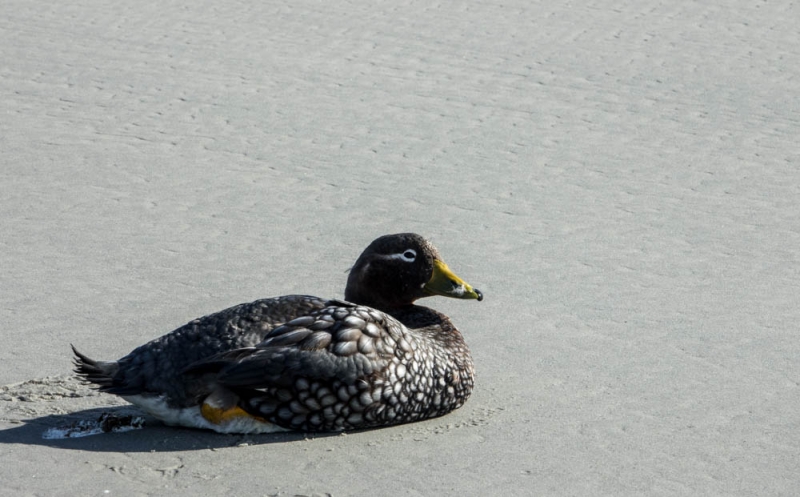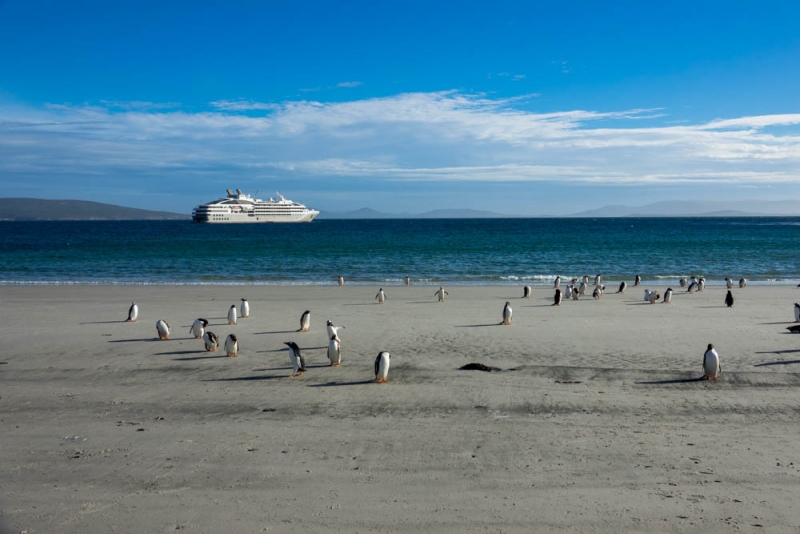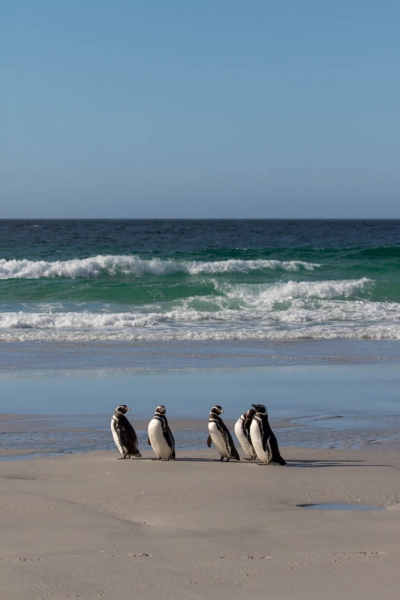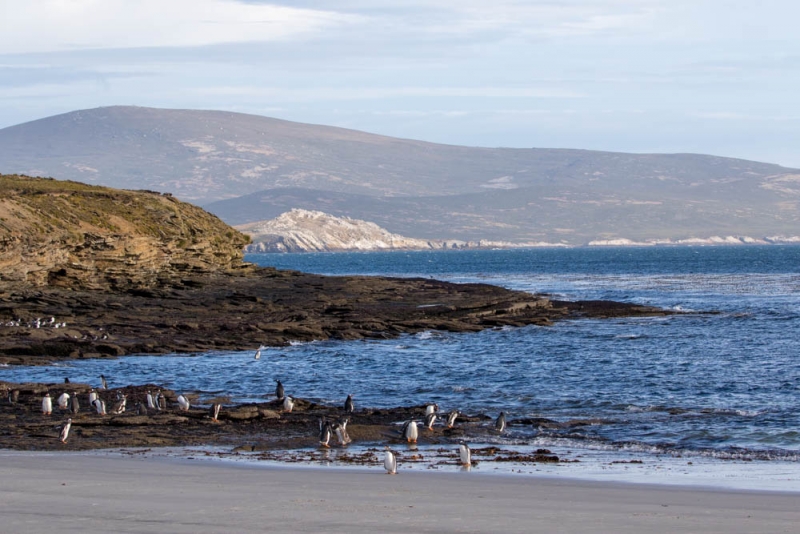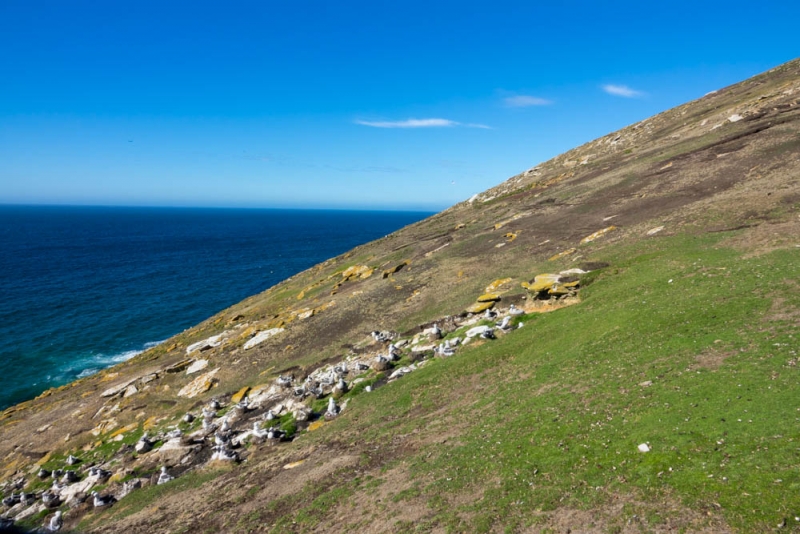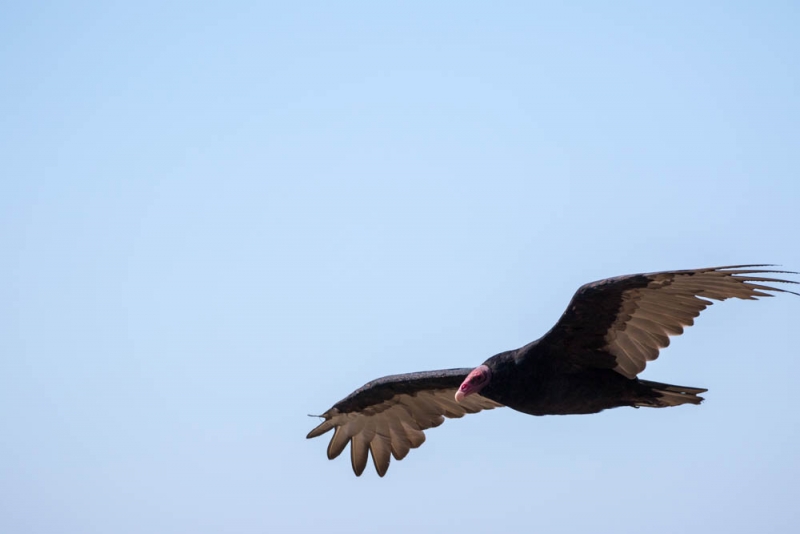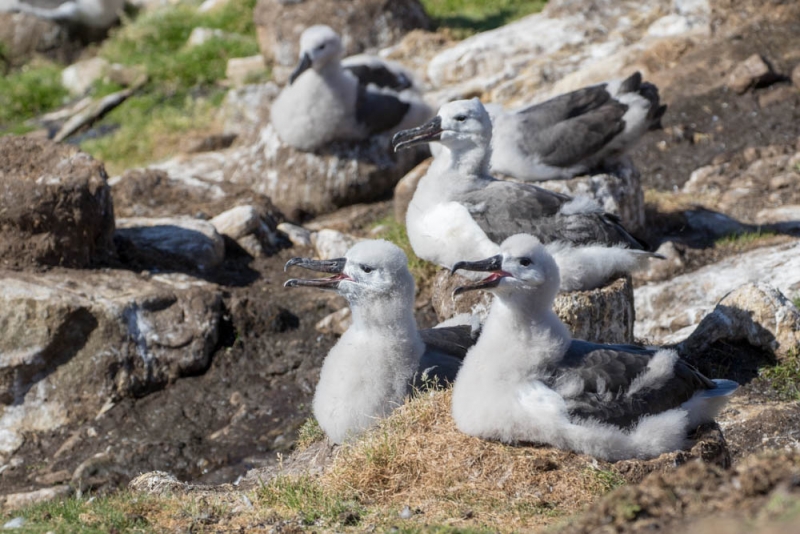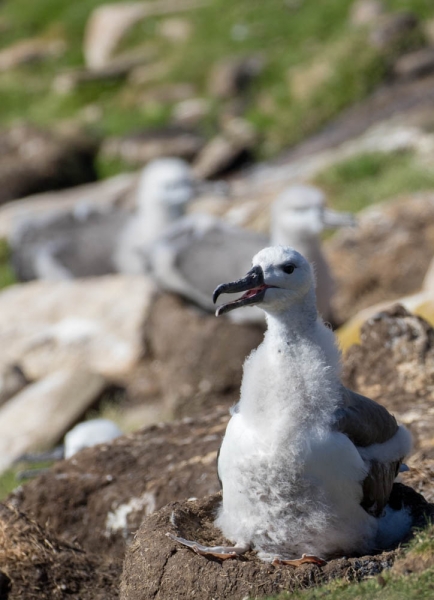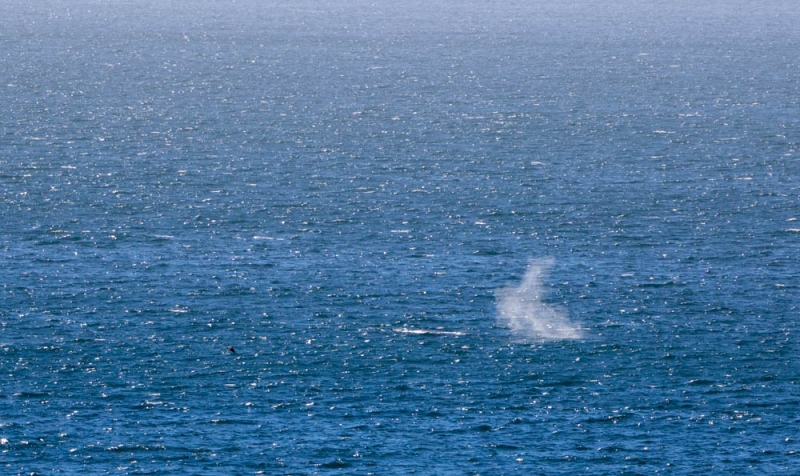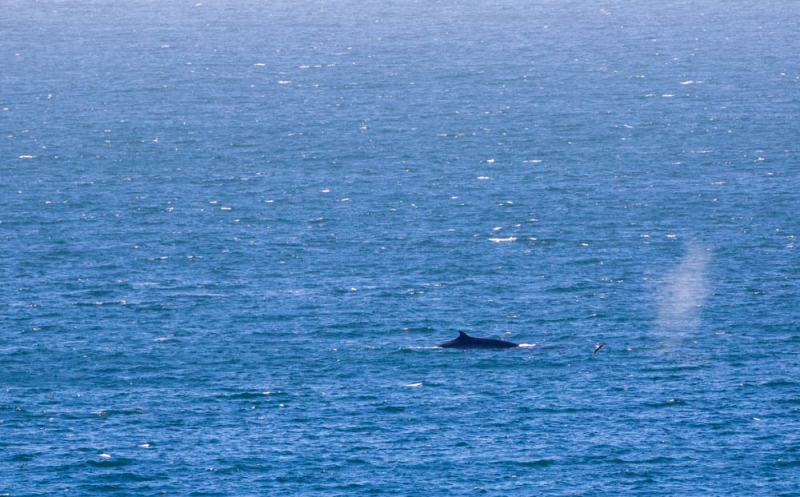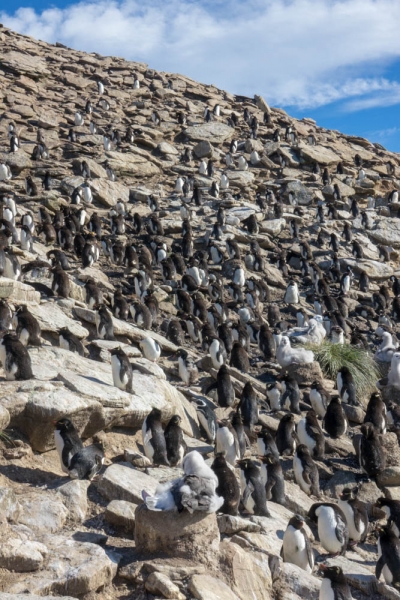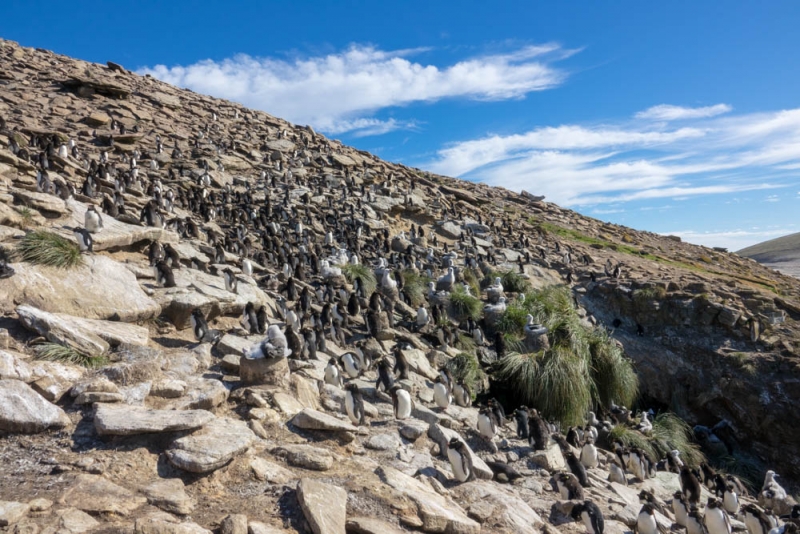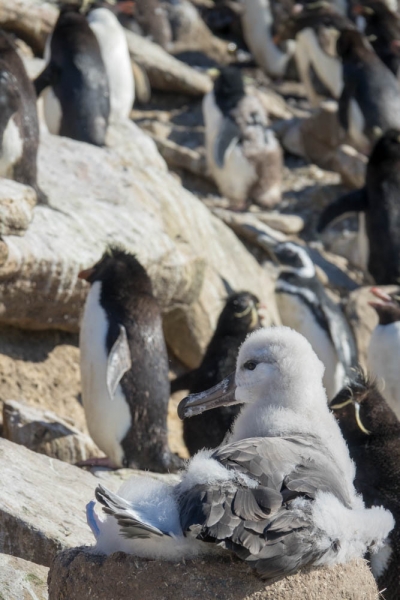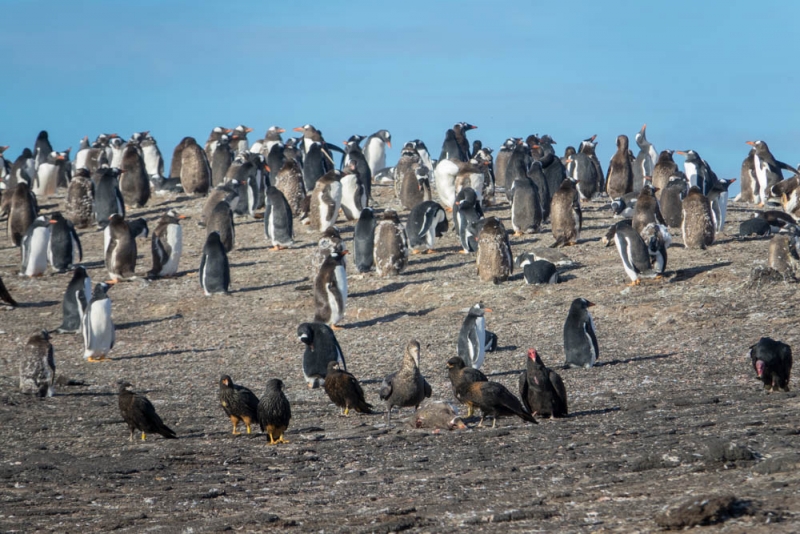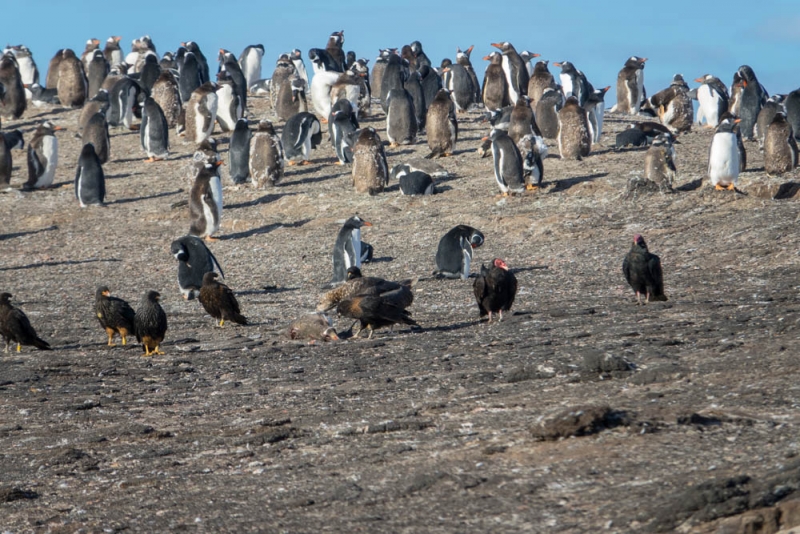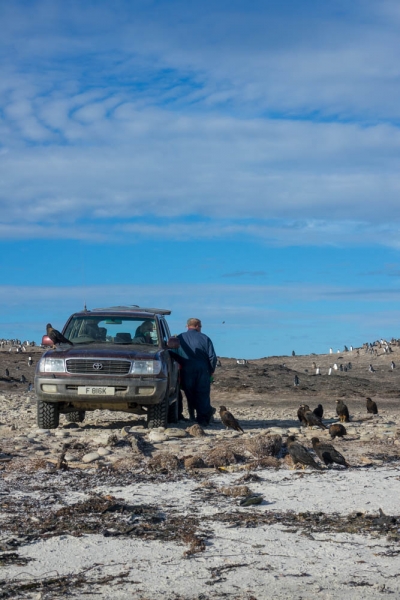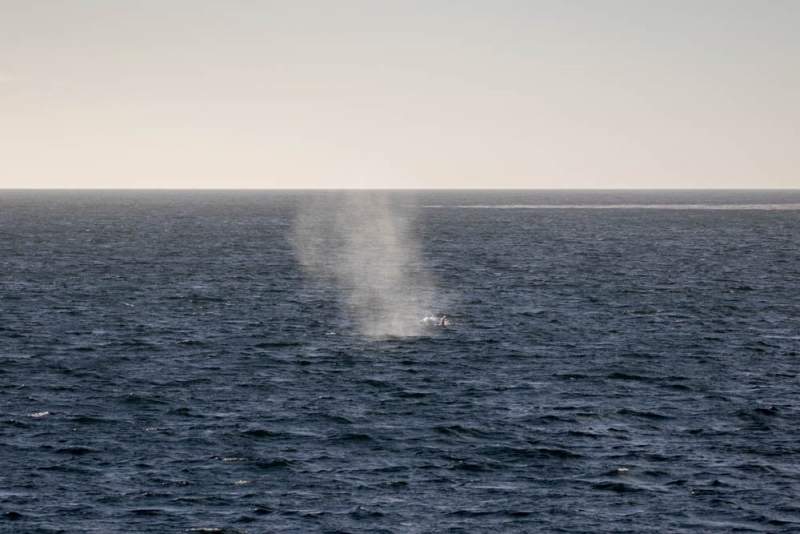West Point Island
It’s a relatively early morning landing at West Point Island today. In the third landing group, we are on the ground at 7:45am. Today’s forecast is for 14 degrees Celsius, but at the time of landing it’s still 7 degrees and mostly overcast. West Point is another privately owned island, and I’m sure I’ve visited before and hiked to this landing site from another location.
Today it’s a 1.5km hike to a small black-browed albatross colony, with the potential for some rockhopper penguins. I’ve learnt my lesson from yesterday, and strip down to a t-shirt and thin fleece for the hike. It’s mostly uphill on a gentle incline, with a strong breeze to keep it interesting. For those that can’t make the distance, the locals are running a Land Rover shuttle service to the colony and back again.
It’s bright and sunny by the time I reach the colony. There are plenty of grey fluffy albatross chicks, and a healthy population of rockhopper penguins.
There are also plenty of striated caracaras patrolling for anything loose or unattended, and some rockhopper penguins enjoying the warm sunny conditions.
The caretakers of West Point (the owners have retired to Stanley) have put on a large spread for morning tea, and are apparently expecting the National Geographic Explorer to arrive this afternoon as well. They’ve been baking for three days on a single stove to create all of the goodies.
The sunny conditions are still in force by the time Le Lyrial departs West Point Island, with the next destination being Saunders Island, a very short sail away.
Saunders Island
At Saunders Island, we are landing at The Neck, a broad stretch of windswept beach between two green pastures. Saunders Island is also privately owned, and a working sheep farm, so there will be some photos of penguins with sheep in the photo as well.
The local farmers have taken time out to meet the arriving ship, and brief the expedition team on the beach.
It’s definitely moulting season for the Gentoos, with these poor guys replacing their feathers for a couple of weeks, they won’t eat or drink (unless there is fresh water nearby), or swim. They’re basically miserable and look it.
There is a small number of king penguins here, all with chicks of various ages – some sizeable oakum boys through to a newly hatched chick with only it’s little grey head visible on its parent’s feet.
The Magellanic penguins have their burrows on the hillside, and seem unperturbed with the idea of sharing the location with some sheep and a few upland geese.
The warmth of the sun and the broad expanse of white sandy beach on the other side of The Neck are more reminiscent of South Africa than the Falklands. These could easily be mistaken for African penguins around Betty’s Bay or Nordhoek beach in South Africa. Not Falklands weather at all! A pair of flying steamer ducks are sunbaking on the beach as the Magellanic and Gentoo penguins leave the sea for their colonies or burrows. Further up on the beach is the skeleton of a young Sei whale.
The small colony of black-browed albatrosses is higher up on the hillside, and is actively patrolled by caracaras and turkey vultures. It’s so warm by this point of the afternoon that the albatross chicks are panting on their nests to cool down.
The vantage point is also excellent for whale watching from the cliff – there are quite a few Sei whales blowing close to the cliffs.
There is a rockhopper colony perched on the side of the cliffs, a steep but doable crabwalk down. The rockhoppers are happily sharing with a few albatross, a few shags and and a lonely Macaroni and Magellanic penguin trying to blend in unobtrusively.
Saunders turns out to be a great location, with brilliant sunshine. There a five species of penguin here at Saunders – king, Gentoo, Magellanic, Rockhopper and the Magellanic. An unfortunate Gentoo has just died and the scavengers are on the clean up job already – one lone Giant Petrel, with a posse of caracaras and a couple of turkey vultures.
I’ve seen more caracaras on this trip than on any other. A large posse of caracaras waits with the farmers 4WD (not a Land Rover surprisingly) at the landing site, hoping for something to squabble over.
A Sei whale stays around the ship for quite a while as we depart, and with a couple of days sailing to South Georgia Island, we are treated to a muted sunset as we farewell the Falklands.
The weather has been fantastic, and it seems we will have a smooth crossing to South Georgia as well, which is two days away.

